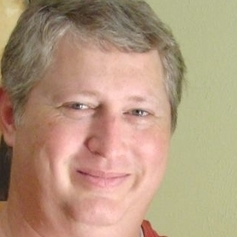
A Multi-Site Primer
Orginally published on Tuesday, December 26, 2006 at 9:05 AM
by Todd Rhoades
Here's an article published recently in the Daily Press that gives a good look at a new multi-site church; and a reasonable review of the multi-site movement. It's worth your time to read...
When the Rev. Lynn Howard tells the congregation a joke, they laugh along with the people in the video. Howard is the pastor at Crossroads Community Church, which meets at two places simultaneously each week.
The church’s “headquarters” is at Coventry Elementary School in York County. The congregation opened a second location at 1420 Lakeside Drive in mid-September, making Crossroads part of a national trend in multisite churches.
A multisite church is one church that meets in more than one location, usually by using video to broadcast elements of the worship service. The concept is similar to franchising. Today, there are about 1,500 such churches across the country, according to Leadership Network, an organization that hosts an annual multisite church conference.
“We want to be able to bring people to church where they don’t get lost in a crowd,” said Howard. “We want to create a lot of places to come home where you experience a relationship.”
The basic idea behind this sort of branding of worship dates as far back as the American Methodist circuit riders of the 1800s. A circuit rider was basically a preacher for multiple satellite churches, which were started up as fast and as cheap as possible. When the circuit rider was away at another church, each site had a permanent leader to keep things going until the circuit rider came back.
Today’s multisite church tends to follow a basic pattern set by places like North Coast Church in Vista, Calif., and Community Christian Church in Naperville, Ill., which have been using video technology in their worship services since the 1990s.
This is a walk away from creating more megachurches for a number of reasons. Getting enough land from a city can be a hassle. Building and maintaining it can be too expensive. Visitors and members get lost in the sea of thousands. The commute is too long to develop relationships with each other and get involved in different ministries.
Anna McGowan, a member at Crossroads who lives in Hampton, likes having two locations for that reason. Driving to Lakeside Drive would be too far for her, especially when it comes to her spiritual growth.
“Most churches that are really healthy and vibrant aren’t just meeting on Sunday. The Bible studies, the women’s groups, the children’s programs ... It’s a lot easier to be a part of that if you’re nearby,” she said.
And it’s not like either group is missing out on much, because the way people expect a Krispy Kreme or a Subway to be the same wherever it is, the same is expected of the multisite church.
For Crossroads’ service at the elementary school, the song leader is on guitar with backup musicians while the congregation sings along. They have the same thing at Lakeside. At the elementary school, the children’s church is teaching the kids about the birth of Jesus Christ and how to cope with divorce. They’re doing the same thing at Lakeside. At the elementary school, the pastor is talking about letting go of baggage. Uh, well, not at Lakeside.
This is the only place where the services differ. Some places opt for simulcast or even recording the preacher’s Sunday sermon on Saturday and sending it to the other sites so that everyone’s seeing it on the same day. Crossroads records the sermon at the elementary school service so that Lakeside can watch that message on video the following week.
“I like being a week behind. That lets us fix stuff,” said Rob Amos, site leader at Lakeside. He and Howard meet each Tuesday to walk through each element of the upcoming service, like how to introduce the video of the sermon so that it’s clear and how to conclude so that people can respond to what they’ve heard.
Critics of the multisite approach worry that it creates a distance between the members and the pastor. The people watching the preacher on screen don’t get a chance to develop the kind of relationship that they would in person.
“It’s a legitimate concern, it really is,” said Howard. Crossroads tries to stay away from people looking at the pastor as the one person with the answers. They also have the pastors visit each location often.
“Even if they don’t need to know us, we need to know them so that we can serve them well,” he said.
Those kinds of concerns aside, the York County church has added between 100 and 200 members because of the new location. People saw it as something new and closer to where they live, so they made it home. That’s why they did it, said Howard, to provide a place for people to experience Christ and belong to each other.
“One of our fears is that the bigger the crowd gets, the harder that is. And the better you serve people, the bigger the crowd gets.
“It’s almost like your success ruins what’s most needed,” he said. “So what we want to be able to do is reach people and never lose the opportunity to come home.”
SOURCE: The Daily Press
TAGS: multi-site+church multisite+church church+leadership
![]()
This post has been viewed 1125 times so far.
There are 2 Comments:

Hi... I'm Todd Rhoades. I'm a Christ-follower, husband, father and I love to connect leaders with other leaders. Hopefully you'll find something here at MMI you like and will return often. If you want, you can find out more about me or follow my every step on Twitter.
![]()



-
Posted by Leonard
Tuesday, December 26, 2006 at 10:49 AM
-
Posted by donnie
Tuesday, December 26, 2006 at 6:03 PM
Post Your Comments:I love the multi site phenomena, I think it has great potential and has yielded great fruit. I wonder about its longevity past the “name” preacher. I am sure the people leading this movement are thinking about it. It would be fun to see the variations of this movement and listen to how they plan and deal with their internal issues. As a leader in a church planting movement I can say there is much more to making the “locations” home base for people and most all of these Multi-site churches have done an amazing job. You keep going and I’ll keep praying!
Does a multisite have to be in two locations at the same time? We are looking at starting another worship gathering in a different location on a different day. We meet in a movie theatre on Sundays, but we are praying about starting another worship gathering at a local pub.
Page 1 of 1 pages